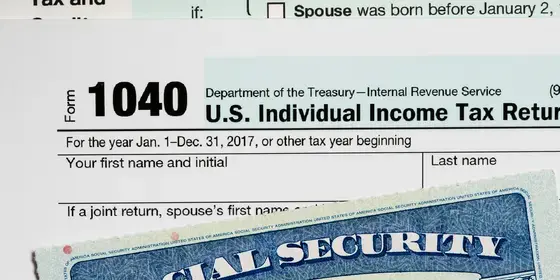Roth conversions can be a powerful tool to save on taxes in retirement. Yet, even with that goal in mind, many people don’t pay enough attention to the taxes incurred from the Roth conversion itself. How is a Roth IRA conversion taxed? When converting funds from a Traditional IRA to a Roth, that withdrawal is assessed at your marginal income tax rate. Which means, depending on the size of the conversion, you could wind up with a pretty large tax bill.
For people who may want to convert a large amount of tax-deferred dollars to a Roth IRA, it raises an interesting question: How do you pay the tax from a Roth conversion?
What Is a Roth Conversion?
To ensure everyone is on the same page, it’s helpful to take a step back and look at what a Roth conversion entails. A Roth conversion means moving money from a Traditional IRA that is tax-deferred (meaning you likely received a tax deduction when you made the contribution and will have to pay taxes on withdrawals) into a Roth IRA. Assets inside of a Roth IRA potentially grow tax-deferred, and any qualified distributions (you must be age 59 ½ and the earnings must be in the account for at least five years) are tax-free.
The downside, as mentioned earlier, is that you’ll be paying income taxes on the amount converted. As long as you’re able to pay the tax bill, there aren’t any Roth conversion rules or limits on how much money you can convert to a Roth in a given year.
How Do I Pay Roth Conversion Taxes?
Let’s imagine you want to convert $60,000 to a Roth IRA and are in the 25% federal tax bracket. Setting aside state income taxes, you’d owe the IRS $15,000. The best way to pay the tax on your Roth conversion is with savings that are liquid and aren’t in a retirement account.
Here’s why: If you use the IRA to pay the $15,000 tax, you’d be left with $45,000 inside of a Roth. If the remaining $45,000 grows at a hypothetical 7% rate of return, you’d have nearly $125k after 15 years. If, however, you have enough money set aside in a non-qualified account (an account that is neither tax-deferred or tax-advantaged) to pay the bill and are able to keep the entire $60,000 in the Roth IRA, you’d have over $165k after 15 years.
It gets even worse if you’re under age 59 ½ because the $15,000 you used to pay the conversion tax would be treated as an early distribution. The penalty tax is 10%, meaning you’ll need to pay an additional $1,500 in taxes you may not have anticipated.
With all that said, if you’re in a situation where you’d have to use your IRA to pay the tax on a Roth conversion, it doesn’t necessarily mean you shouldn’t make the conversion. Similarly, just because you have enough assets in a non-retirement account doesn’t mean it’s wise to do a large Roth conversion all in one year. Roth conversions can cause a lot of ripple effects throughout your financial plan (including the possibility of bumping you into a higher income tax bracket for the year), which means it’s critical you think about the tax implications before you make the conversion to better ensure you’re making the best decision.
What Is the Timeline for Roth Conversions?
Although a Roth conversion can be completed at any time, it should be noted that you should act quickly in order to take advantage of historically low tax rates. Unless further action is taken, the current low tax rates will revert back to 2017 rates in 2025, leaving just a short window for you to complete Roth conversions at the current rates.
Congress may extend the cuts or enact a very different tax law. It's impossible to predict. One sure thing is that today's tax rates are relatively low. Also, keep in mind that you don’t have to convert all your funds at one time. You can limit your tax hit by spreading out the process over the next few years, converting just enough to stay in your current bracket.
However, because of this shrinking window and the ripple effects on your financial plan of completing a Roth conversion, it’s a good idea to connect with a financial advisor. They will be able to help you identify opportunities and strategies to get the most out of your conversion and adjust your financial plan around it to limit your tax burden.
This information is not intended to be a substitute for specific individualized tax advice. We suggest that you discuss your specific tax issues with a qualified tax advisor.




